
Reaching New Energy Frontiers in Alaska
Alaska is an energy powerhouse—home to a wide variety of inspiring energy innovations.
As Senator Lisa Murkowski said at the 2023 ARPA-E Energy Innovation Summit, Alaska is the perfect testing ground for any energy technology solution under the sun. Simply put, Alaska is the perfect place for innovation.
ARPA-E Director Evelyn Wang and other members of the ARPA-E team recently visited the state to see a variety of ARPA-E-funded projects working to support America’s decarbonization goals, increase access to sustainable energy, and strengthen the economy.
First, Director Wang traveled to Fairbanks to see ARPA-E performer Ampaire’s hybrid-electric aircraft make history. Ampaire’s successful flight to Fairbanks marked the first-ever hybrid-electric flight to Alaska, as well as the first international hybrid-electric flight. Ampaire developed the aircraft with support from ARPA-E’s CIRCUITS program, and it is currently a performer in the SCALEUP 2021 program.
“To enable low-cost, low-carbon transportation, we need to commercialize electrified aircraft technologies and realize the full potential of regional airports,” said Director Wang. “If we rise to this challenge, we can connect Alaskans and all Americans to one another, transport goods, and provide services including medical care. We can drive down the cost of travel and make it accessible for all communities. This historic trip is a milestone on the road to commercialization, and ARPA-E is proud to support Ampaire’s work to achieve the full potential of hybrid-electric and electric aircraft.”
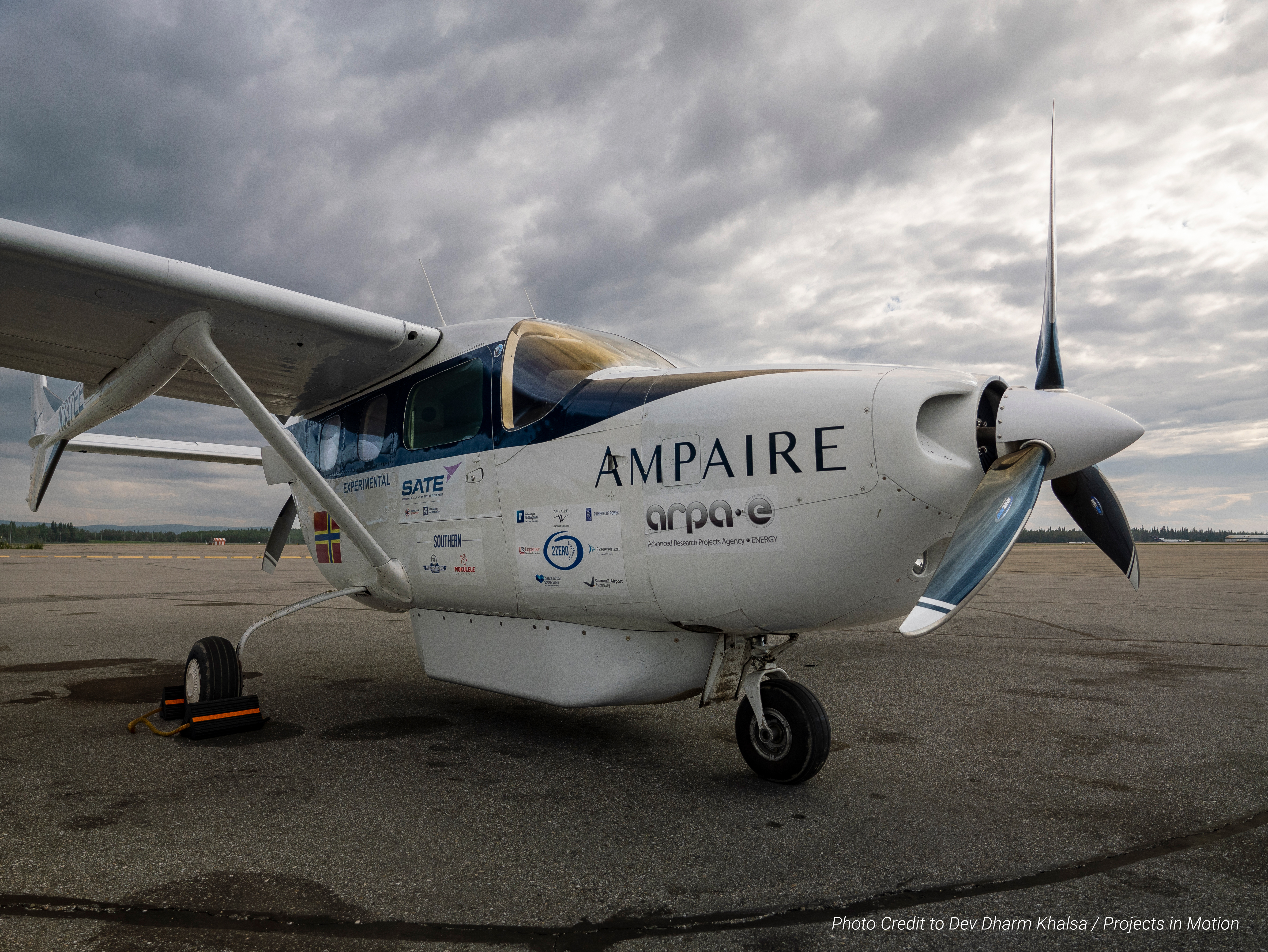
Ampaire’s Hybrid-Electric Aircraft
(Photo Credit: Dev Dharm Khalsa / Projects in Motion)
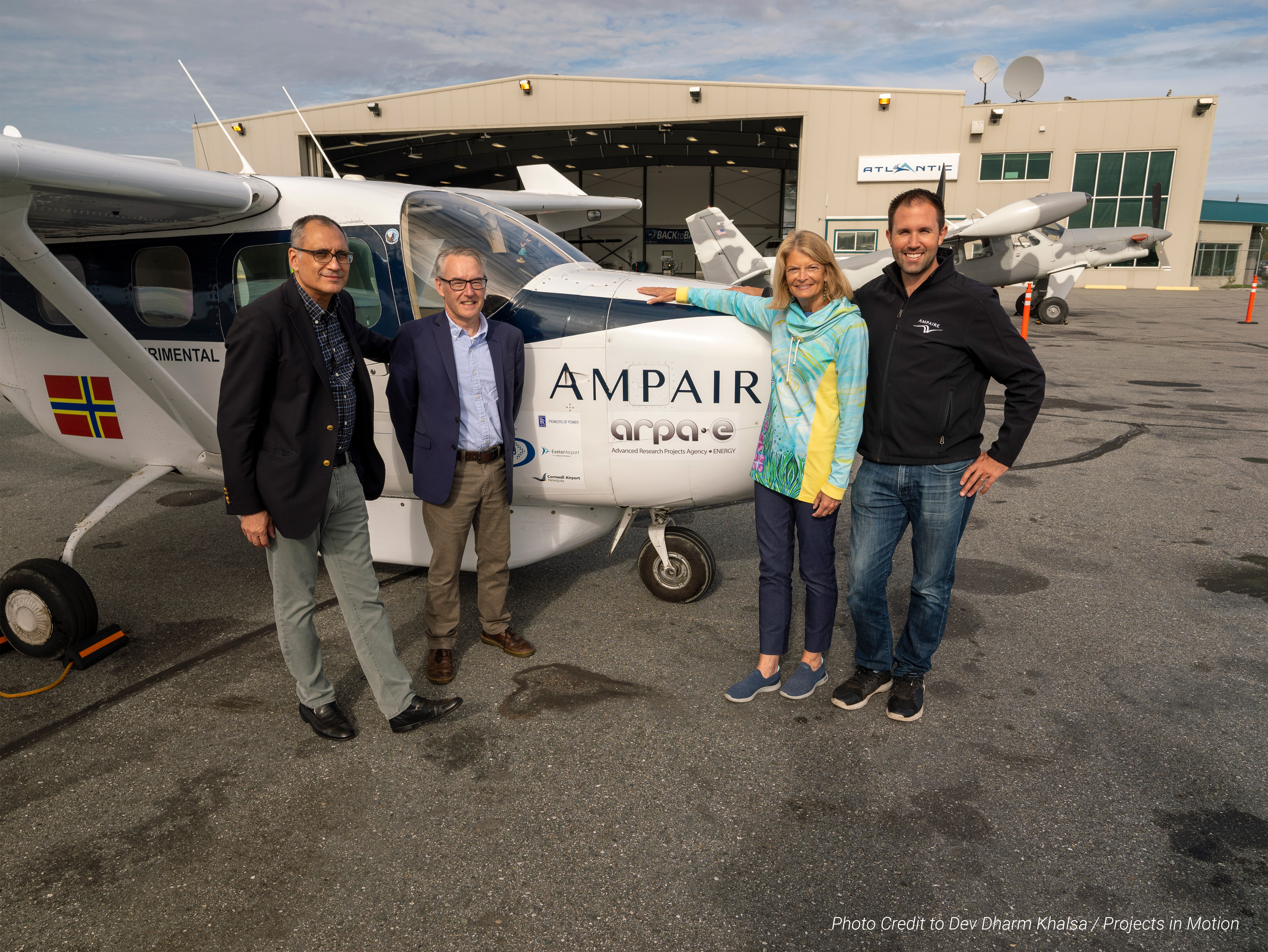
(Left to Right): ARPA-E Associate Director for Technology Dr. Isik Kizilyalli, ARPA-E Acting Deputy Director for Technology Dr. Daniel Cunningham, Alaska Senator Lisa Murkowski, Ampaire Co-Founder and CEO Kevin Noertker
(Photo Credit: Dev Dharm Khalsa / Projects in Motion)

(Left to Right): ARPA-E Director Evelyn N. Wang, ARPA-E Deputy Director for Operations Shane Kosinski, ARPA-E Technology-to-Market Advisor Daniel Rogers
(Photo Credit: Dev Dharm Khalsa / Projects in Motion)
In Chena, Director Wang delivered remarks at the Renewable Energy Fair and highlighted ARPA-E project teams working on carbon negative building materials and novel marine technologies. She also made it out to Nondalton, a remote Alaskan Tribal community, to discuss the nuances of energy research needs in rural communities in Alaska. The goal for this visit was to inform ARPA-E research that could apply to smaller communities such as Nondalton.
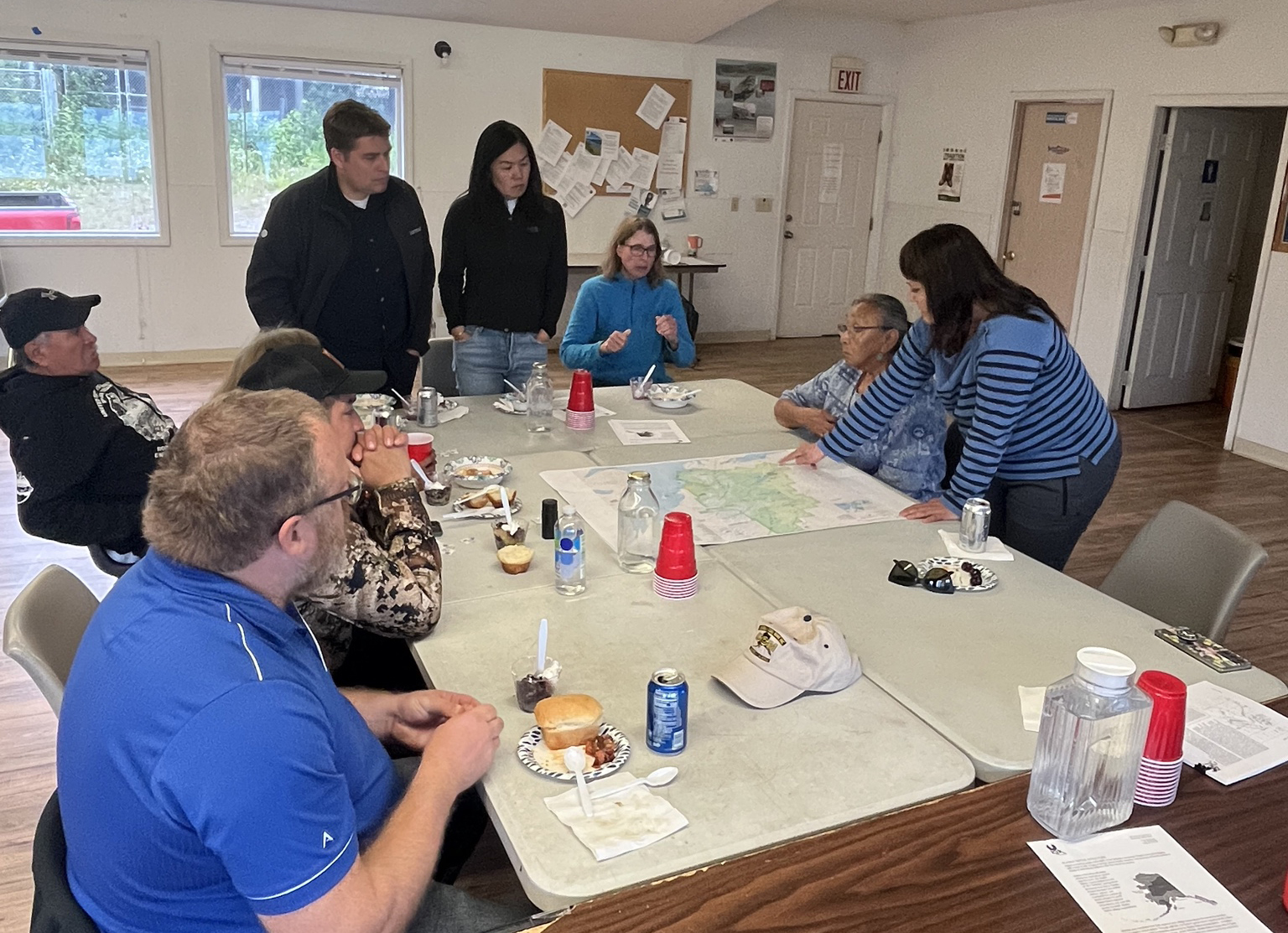
(Standing, Left to Right): ARPA-E Deputy Director for Operations Shane Kosinski and ARPA-E Director Evelyn N. Wang speaking to residents of Nondalton about the impact of energy research on the Tribal community
Throughout the course of her time in Alaska, Director Wang visited ARPA-E performers making tremendous strides on their projects in the state. SHARKS performer University of Alaska, Fairbanks and their partner BladeRunner Energy hosted Director Wang in Nenana, Alaska for a demonstration of their novel hydrokinetic turbine (HKT) system. Their unique HKT system employs a floating generator housing and tethered turbine to lower costs, deflect around debris, and optimize for community co-design. Most importantly, the technology makes hydrokinetic energy an abundant and viable renewable energy source that presents unique opportunities and benefits for rural communities like those in Alaska. The team deployed and demoed this system in a river outside of Fairbanks, Alaska.

(Left to Right): Technology-to-Market Advisor Dan Rogers, ARPA-E Deputy Director for Operations Shane Kosinski, Co-Founder, CTO, and CEO of BladeRunner Energy Moriel Arango, and ARPA-E Director Evelyn N. Wang at the BladeRunner testing site

(Left to Right): Pacific Marine Energy Center Co-Director at Alaska Center for Energy and Power Benjamin Loeffler, Technology-to-Market Advisor Dan Rogers, ARPA-E Director Evelyn N. Wang, ARPA-E Deputy Director for Operations Shane Kosinski, and Co-Founder, CTO, and CEO of BladeRunner Energy Moriel Arango, at the BladeRunner testing site
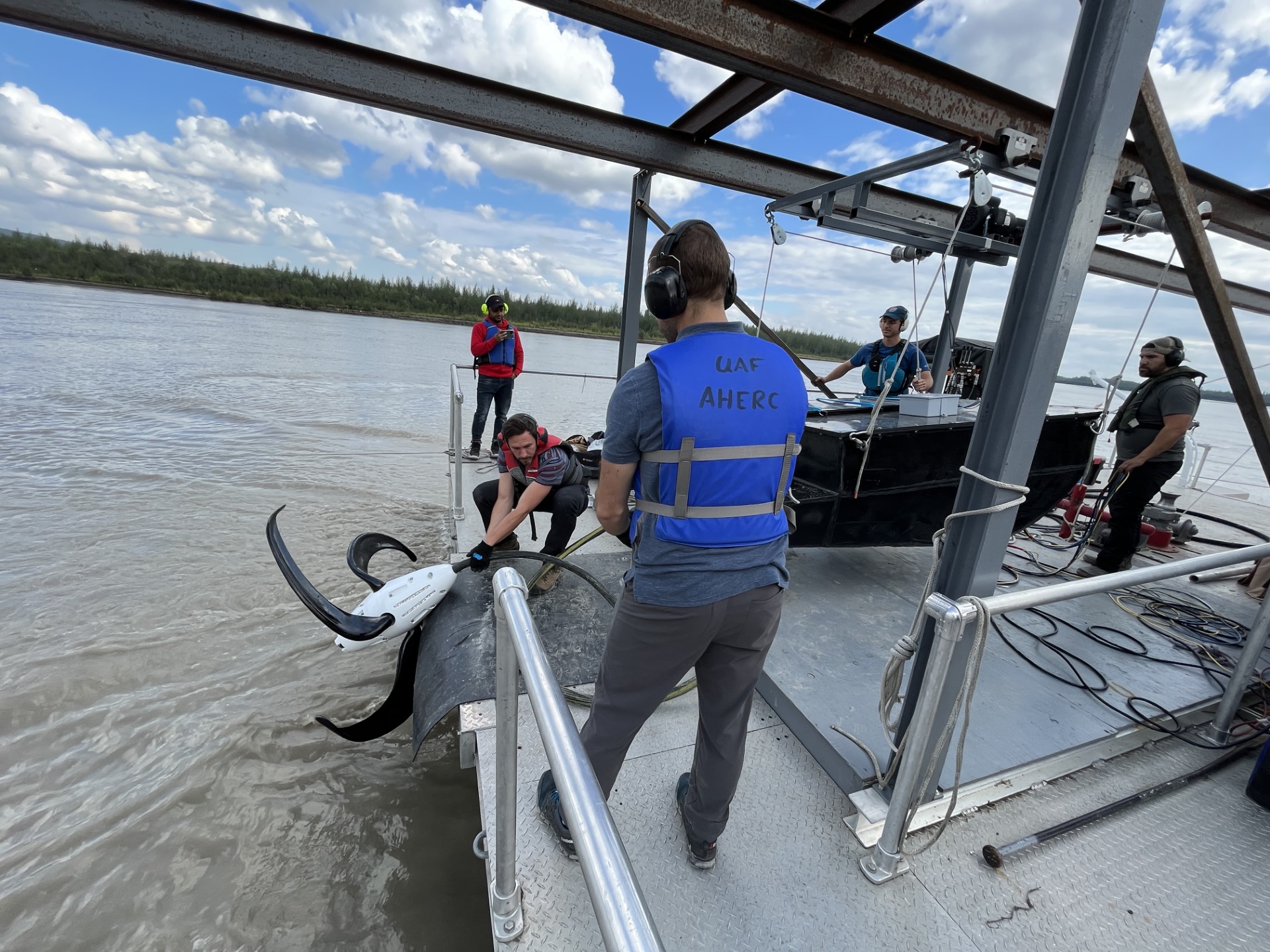
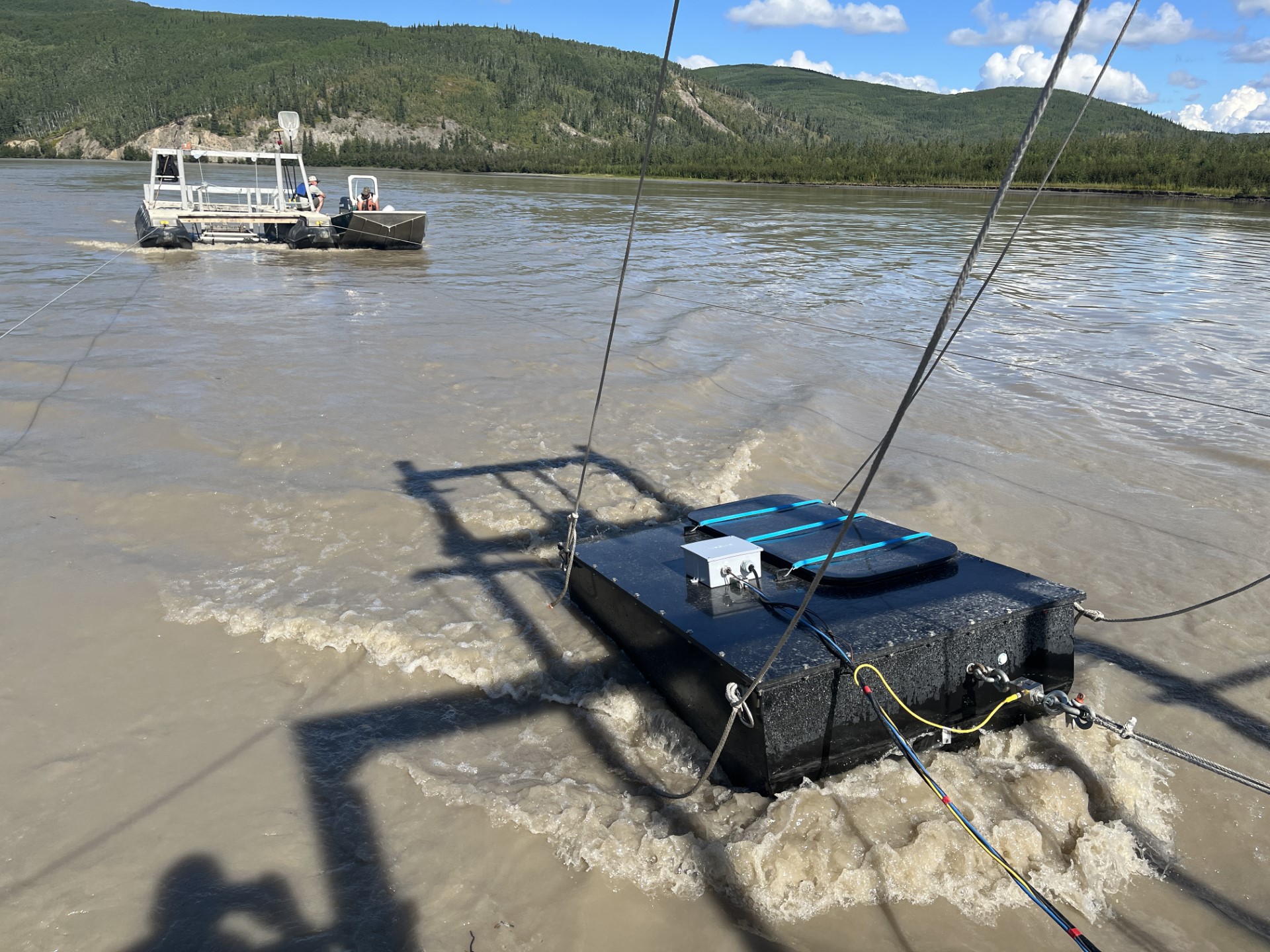
Co-Founder, CTO, and CEO of BladeRunner Energy Moriel Arango demonstrating the technology at the BladeRunner testing site
HESTIA program performer National Renewable Energy Laboratory (NREL) Cold Climate Housing Research Center and its partner the University of Alaska Anchorage (UAA) hosted Director Wang to showcase their net-carbon-negative sustainable building material. NREL and UAA are developing a cellulose-mycelium composite made from beetle-killed spruce in Alaska to create cost-effective, locally produced insulation. The technology will be introduced in a market where insulation can represent 30-50% of the cost of home building supplies. This net-carbon-negative cellulose-mycelium material has high-performance thermal, acoustic, and antimicrobial properties. The team is also working on moving the product from lab to market by enabling local fabrication of construction materials to minimize their carbon footprint and remove a potential fire hazard. Later, Director Wang took a walking tour of the local spruces in the area and a lab tour at UAA for a look at first samples of the material.
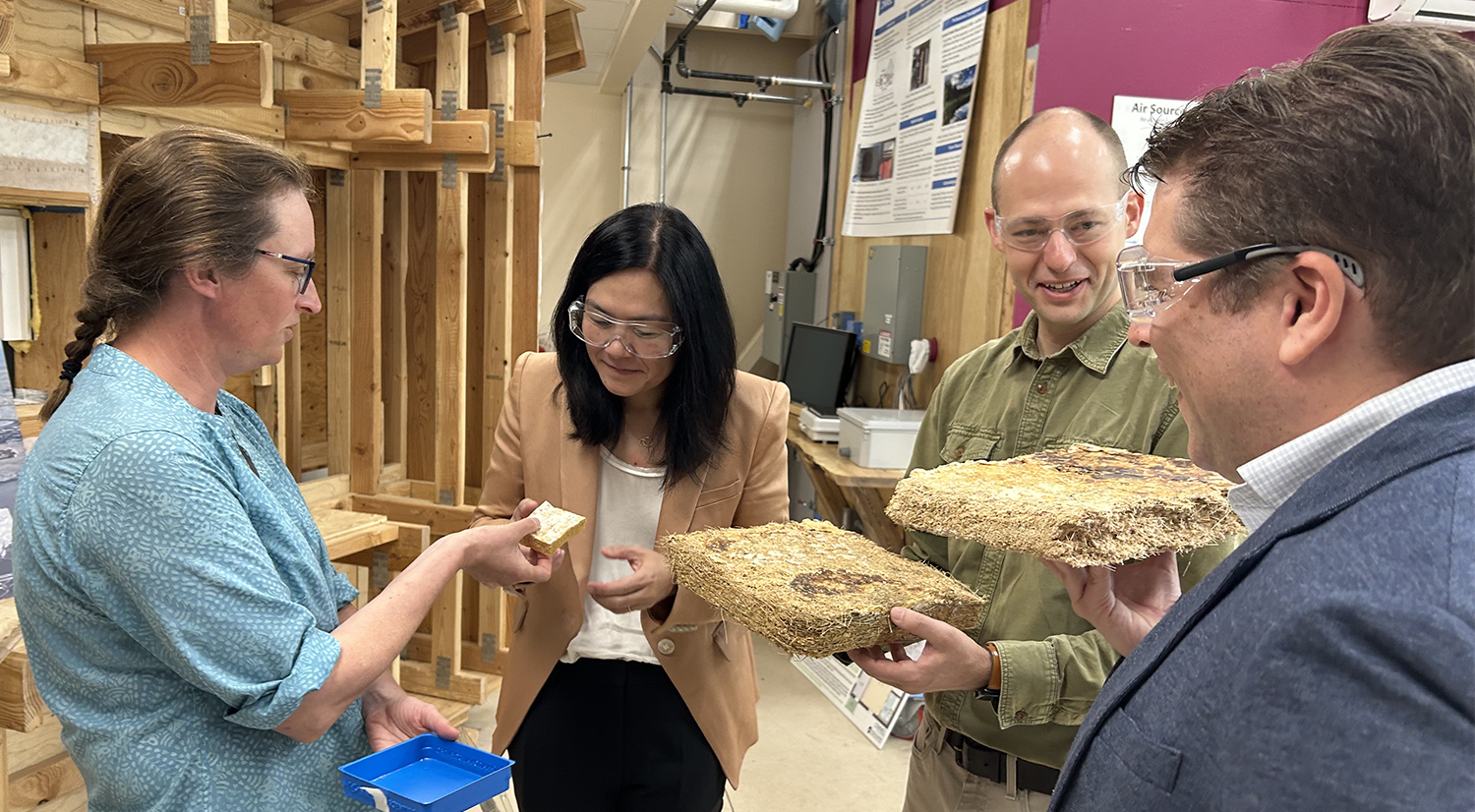
(Left to Right:) NREL PI Robbin Garber-Slaght, ARPA-E Director Evelyn N. Wang, ARPA-E Technology-to-Market Advisor Daniel Rogers, ARPA-E Deputy Director for Operations Shane Kosinski viewing initial lab samples
Finally, Director Wang had the opportunity to meet with Transportation Security Administration (TSA) Regional Director James Duncan and the DOE Arctic Energy Office at the Port of Alaska, which serves as the primary port of entry for goods and food entering the state, and one of the principal ports of entry for fuel. Director Wang attended a kickoff meeting about the resilience and security of the port in response to climate and security challenges facing the region.
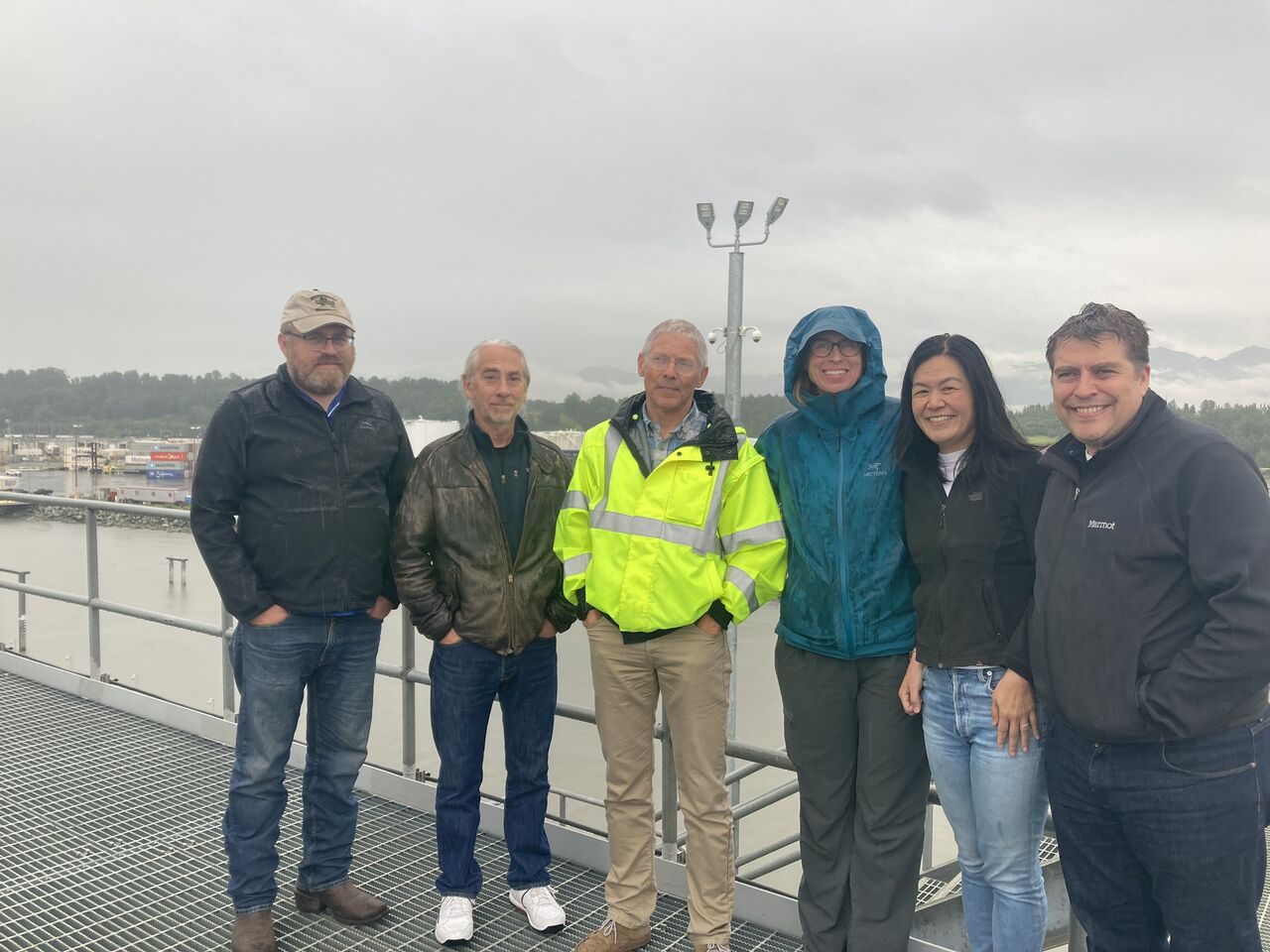
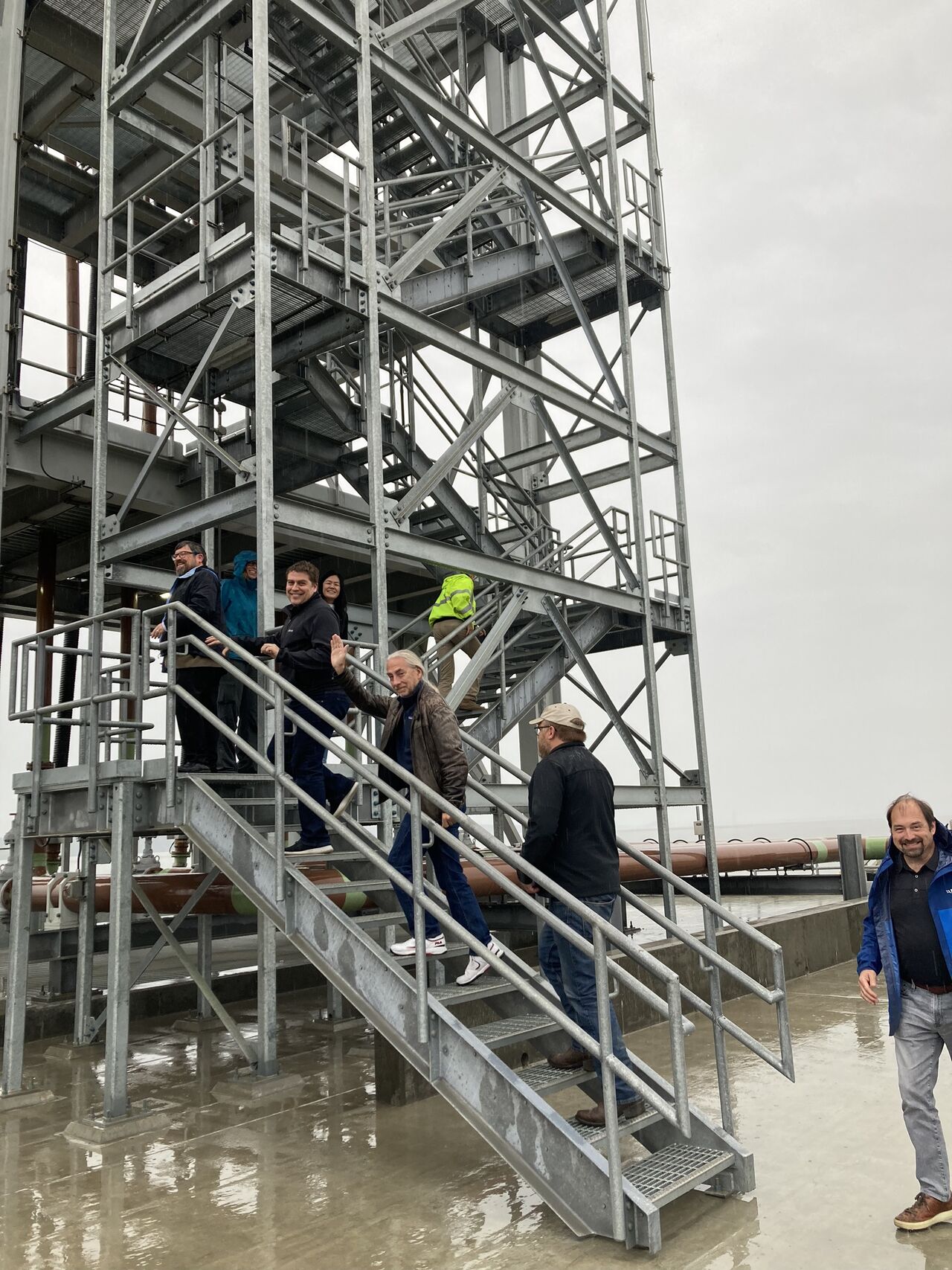
ARPA-E Director N. Evelyn Wang, ARPA-E Deputy Director for Operations Shane Kosinski, TSA Regional Director James Duncan, Other members of staff at the Port of Alaska
Overall, the trip represented an exciting opportunity for ARPA-E and innovators in Alaska to engage on important issues facing the state and continue a long partnership in accelerating the transformation of America’s energy landscape. Working together, Alaska plays an important role in helping the entire U.S. reach net-zero emissions, mitigate climate change, and provide Americans the tools and technologies to face our ongoing climate challenges in the decades to come.
